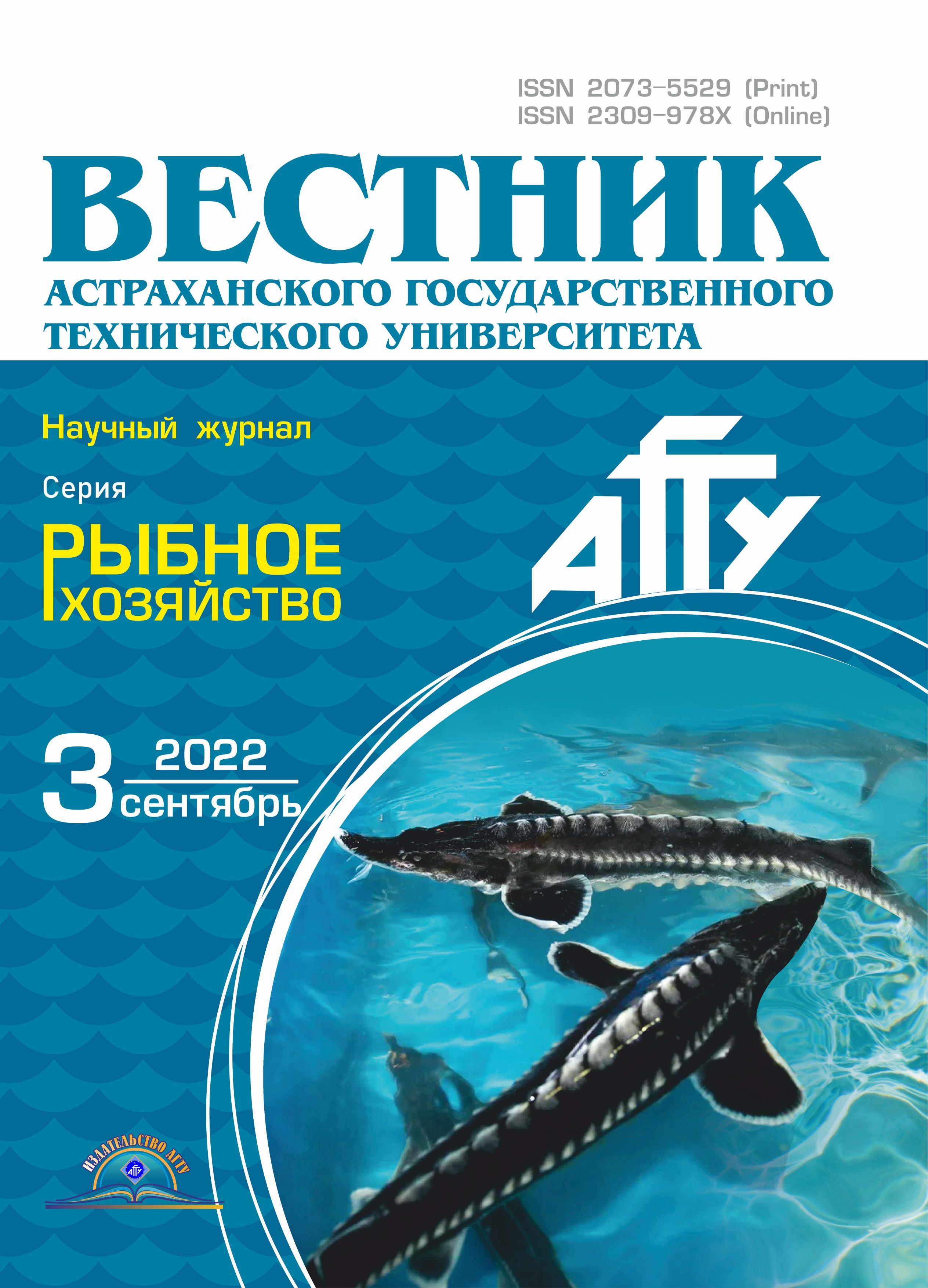Russian Federation
Russian Federation
Russian Federation
Bivalved molluscs are natural filter feeders of the aquatic environment due to their physiological characteristics. Passing sea water containing emulsified oil through them, they bind its droplets in pseudofeces, thereby accel-erating water self-purification. Mussels prove to be resistant to oil pollution. Experiments have shown that in aquariums with mussels the content of petroleum hydrocarbons decreases faster than in the tanks without mussels. The interaction of mussels with oil has been studied in detail. It has been established that when passing through the body of mussels the group composition of oil products changes. Oil resignification is noted, which is also observed during its natural weathering. Currently, for the post-purification of natural ecosystems from oil pollution, the method of introducing active hydrocarbon-oxidizing microorganisms is widely used, often with the simultaneous incoming of additional biogenic elements, the so-called bioaugmentation. In this regard, the study of the interaction of oil-oxidizing microorganisms and molluscs is of practical and scientific interest. The aim of the work was to study the interaction of hydrocarbon-oxidizing microorganisms on molluscs Unio and other components of the microecosystem when modeling the process of oil pollution. A study was made of river water, soil and molluscs Unio from model microecosystems for contamination by saprophytic and hydrocarbon-oxidizing microflora with the additional introduction of hydrocarbon-oxidizing microorganisms – Serratia grimesii and Bacillus sp.3 under conditions of Caspian oil pollution.The values of the bacterial composition of saprophytic and hydrocarbon-oxidizing microflora obtained in the experiment suggest that the processes of restoration and reclamation of a water body take place due to the structural and functional organization of ecosystems and communities.
model microsystems, pollution, microorganisms, oil, microflora
1. Mironov O. G. Vzaimodeystvie morskih organiz-mov s neftyanymi uglevodorodami. L.: Gidrometizdat, 1985. 227 s.
2. Mironov O. G., Milovidova N. Yu., Schekaturina T. L. Biologicheskie aspekty neftyanogo zagryazneniya morskoy sredy. Kiev: Naukova dumka, 1988. 248 s.
3. Mironov O. G. Potoki neftyanyh uglevodorodov cherez morskie organizmy // Mor. ekolog. zhurn. 2006. T. 5. № 2. S. 5-14.
4. Alyakrinskaya I. O. O povedenii i fil'tracionnoy sposobnosti chernomorskoy midii v vode, zagryaznennoy neft'yu // Zoolog. zhurn. 1966. T. 45. № 7. S. 988-1003.
5. Zhadin V. I. Mollyuski presnyh vod SSSR. M.: Izd-vo AN SSSR, 1952. 450 s.
6. Dogel' V. A. Zoologiya bespozvonochnyh zhivotnyh. M.: Vyssh. shk., 1975. 560 s.
7. Skopcova G. N. Rol' zoobentosa v samoochischenii vody vodohranilischa // Samoochischenie vody i migraciya zagryazneniy po troficheskoy cepi. M.: Nauka, 1984. S. 81-85.
8. Klishin A. Yu., Kanieva N. A., Badzhaeva O. V. Narusheniya organov i tkaney mollyuskov roda Unio pod vozdeystviem nefti // Tr. VNIRO. 2016. T. 162. S. 82-86.
9. Mironov O. G., Schekaturina T. L. Uglevodorody v morskih organizmah // Gidrobiolog. zhurn. 1976. T. 12. № 6. S. 5-15.
10. Mironov O. G., Schekaturina T. L. Ob uglevodorodnom sostave chernomorskoy midii // Zoolog. zhurn. 1977. T. 56. № 8. S. 1250-1252.
11. Schekaturina T. L. Uglevodorodnyy sostav, ego dinamika i metabolizm u morskih organizmov // Biologicheskie aspekty neftyanogo zagryazneniya morskoy sredy. Kiev: Naukova dumka, 1988. S. 186-234.
12. Pepper I. L., Gentry T. J., Newby D. T., Roane T. M., Josephson K. L. The role of cell bioaugmentation and gene bioaugmentation in the remediation of co-contaminated soils // Environmental Health Perspectives. 2002. vol. 110. N. 6.R. 943-946.
13. Kulikova I. Yu., Dzerzhinskaya I. S. Mikrobiologicheskie sposoby likvidacii posledstviy avariynyh razlivov nefti v more // Zaschita okruzhayuschey sredy v neftegazovom komplekse. Astrahan': Izd-vo AGTU, 2008. S. 24-29.
14. Dzerzhinskaya I. S., Kurapov A. A., Soprunova O. B. Mikroorganizmy v processah destrukcii i bioremediacii. Problemnye lekcii: ucheb. posobie. Astrahan': Izd-vo AGTU, 2009. 238 s.
15. Sokolova V. V. Uglevodorodokislyayuschie bakterii i assimilyacionnyy potencial morskoy vody Se-vernogo Kaspiya: avtoref. dis. … kand. biol. nauk. Astrahan': Izd-vo AGTU, 2011. 24 s.
16. Rodina A. G. Metody vodnoy biologii. Prakti-cheskoe rukovodstvo. M.-L.: Nauka, 1965. 364 s.
17. Metody pochvennoy mikrobiologii i biohimii / pod red. D. G. Zvyaginceva. M.: Izd-vo MGU, 1991. 304 s.
18. Belousova N. I., Shkidchenko A. N. Destrukciya nefteproduktov razlichnoy stepeni kondensacii mikroorganizmami pri ponizhennyh temperaturah // Priklad. biohimiya i mikrobiologiya. 2004. T. 40. № 3. S. 312-316.
19. Dzerzhinskaya I. S. Pitatel'nye sredy dlya vydeleniya i kul'tivirovaniya mikroorganizmov. Astrahan': Izd-vo AGTU, 2008. 348 s.
20. Kanieva N. A., Gol'bina O. V., Fedorova N. N. Izmenenie organov i tkaney mollyuskov roda Unio pod vozdeystviem Kaspiyskoy nefti // Morfologiya. 2014. T. 145. № 3. S. 10.
21. Bul'on V. V. Struktura i funkciya mikrobial'noy «petli» v planktone ozernyh ekosistem // Biologiya vnutrennih vod. 2002. T. 32. № 2. S. 5-14.
















